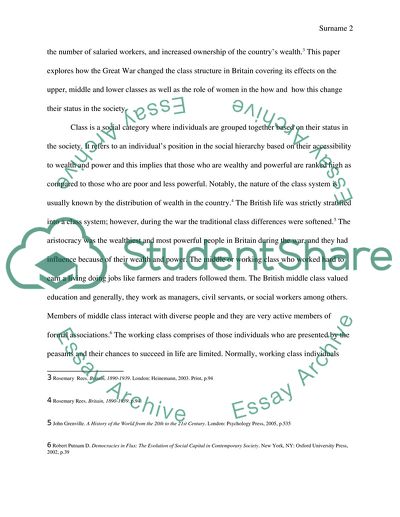Cite this document
(“The Great War, a Catalyst for Changing Class Structure in Britain, Research Paper”, n.d.)
The Great War, a Catalyst for Changing Class Structure in Britain, Research Paper. Retrieved from https://studentshare.org/history/1668663-the-great-war-a-catalyst-for-changing-class-structure-in-britain-1914-1919
The Great War, a Catalyst for Changing Class Structure in Britain, Research Paper. Retrieved from https://studentshare.org/history/1668663-the-great-war-a-catalyst-for-changing-class-structure-in-britain-1914-1919
(The Great War, a Catalyst for Changing Class Structure in Britain, Research Paper)
The Great War, a Catalyst for Changing Class Structure in Britain, Research Paper. https://studentshare.org/history/1668663-the-great-war-a-catalyst-for-changing-class-structure-in-britain-1914-1919.
The Great War, a Catalyst for Changing Class Structure in Britain, Research Paper. https://studentshare.org/history/1668663-the-great-war-a-catalyst-for-changing-class-structure-in-britain-1914-1919.
“The Great War, a Catalyst for Changing Class Structure in Britain, Research Paper”, n.d. https://studentshare.org/history/1668663-the-great-war-a-catalyst-for-changing-class-structure-in-britain-1914-1919.


